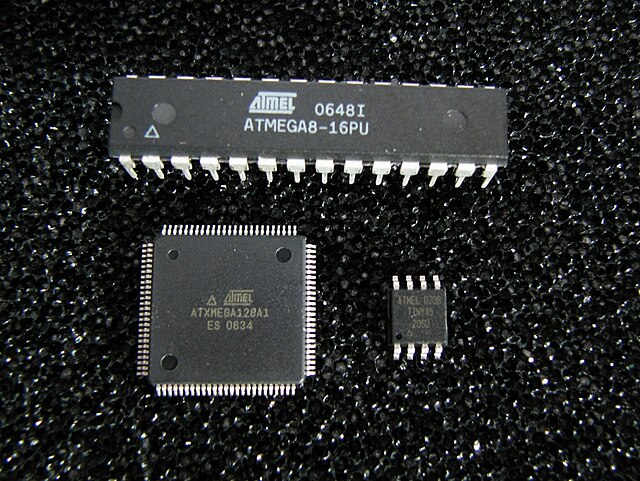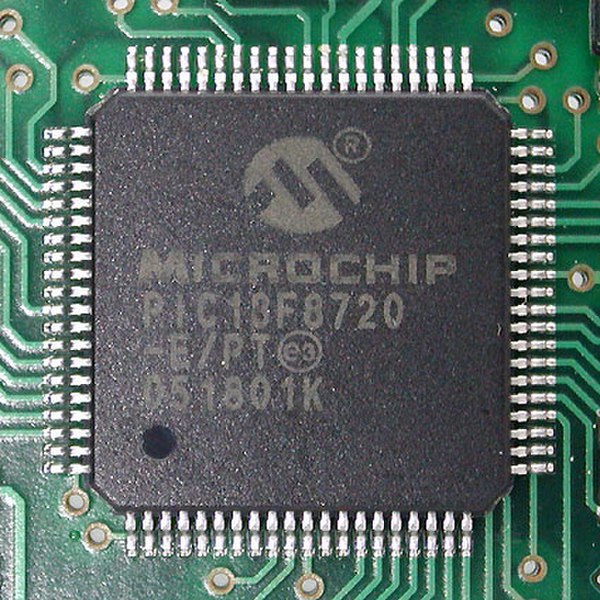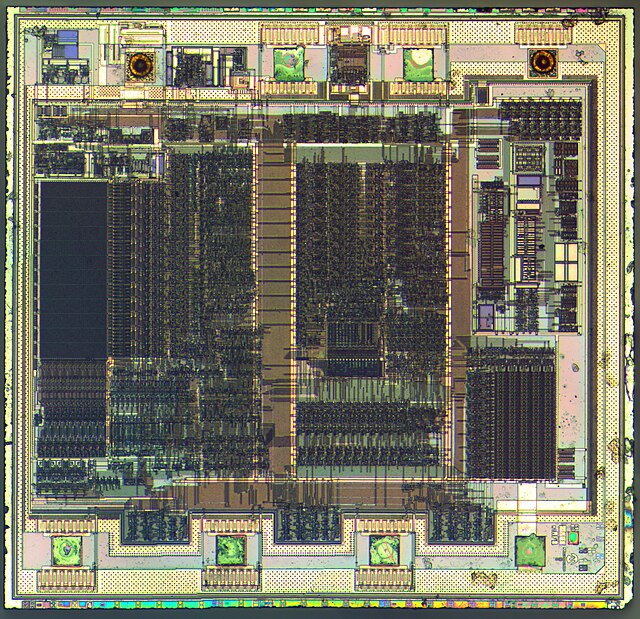AVR is a family of microcontrollers developed since 1996 by Atmel, acquired by Microchip Technology in 2016. These are modified Harvard architecture 8-bit RISC single-chip microcontrollers. AVR was one of the first microcontroller families to use on-chip flash memory for program storage, as opposed to one-time programmable ROM, EPROM, or EEPROM used by other microcontrollers at the time.
Various older AVR microcontrollers: ATmega8 in 28-pin narrow dual in-line package (DIP-28N), ATxmega128A1 in 100-pin thin quad flat pack (TQFP-100) package, ATtiny45 in 8-pin small outline (SO-8) package.
ATmega328P in 28-pin narrow dual in-line package (DIP-28N). It is commonly found on Arduino boards.
Atmel ATxmega128A1 in 100-pin TQFP package
Atmel STK500 development board
A microcontroller or microcontroller unit (MCU) is a small computer on a single integrated circuit. A microcontroller contains one or more CPUs along with memory and programmable input/output peripherals. Program memory in the form of NOR flash, OTP ROM or ferroelectric RAM is also often included on chip, as well as a small amount of RAM. Microcontrollers are designed for embedded applications, in contrast to the microprocessors used in personal computers or other general purpose applications consisting of various discrete chips.
The die from an Intel 8742, an 8-bit microcontroller that includes a CPU running at 12 MHz, 128 bytes of RAM, 2048 bytes of EPROM, and I/O in the same chip
Two ATmega microcontrollers
A PIC 18F8720 microcontroller in an 80-pin TQFP package
Die of a PIC12C508 8-bit, fully static, EEPROM/EPROM/ROM-based CMOS microcontroller manufactured by Microchip Technology using a 1200 nanometer process








